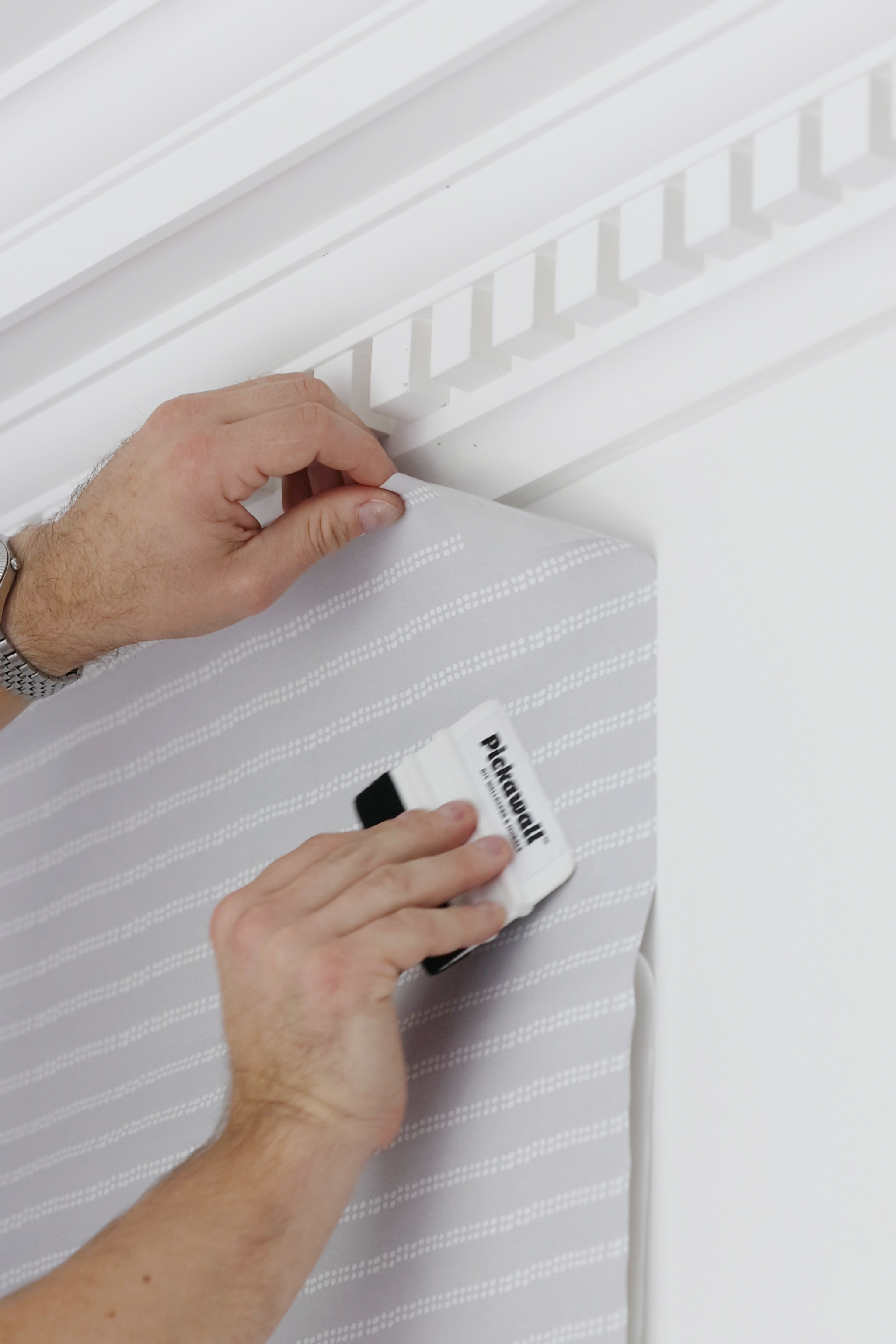How to install
To get started

Step by step install guide

Preparation
Inspect your wall for any defects. Start with a smooth clean surface. Remove any picture hooks or switch plates. On a painted wall, sand back any flakey paint and patch (allow to dry correctly) or chip off paint nodules as this will cause air to get trapped under the Pickawall. Ensure paint is a non-teflon based paint, nothing sticks to teflon.
Hot Tip
This should be an enjoyable process!

Start from the left
Start from the left with wallpaper panel indicated number “1” on the bottom tag, and then sequentially as per your labelled wallpaper panels.
Hot Tip
TAKE your time. It’s important Panel 1 is positioned correctly as this sets the bases for your wall. Ensure its level at the top, check the left and right hand side height of the wall to see if any variance before starting! We allow 40mm excess on the height of all walls, so if your wall is not square you can start with excess above. It is recommended to start 10mm higher at least as no wall is perfectly square.
If a-joining another wall or doorway you may need to slightly overhang panel 1 on the left side and trim later if the walls / door are not perfectly square.
If you're covering two walls that meet at right angles (as seen in this photo). Start where indicated on left of right wall and work right to left on wall 1.

Prepare to stick
Peel back the backing sheet from the top, roughly 200mm from the top of the panel.
Hot Tip
Do not remove the entire backing sheet. Crease the peel back with pressure so it sits flat roughly 100mm section to begin.

Panel 1
Line up the top edge with your ceiling or cornice. We do allow an extra 40mm on the overall height, so it is important to check if your wall is square before commencing.
If your wall is not square, we suggest allowing for 10-15mm excess at the top to account for this.
Smooth it onto the wall with your hands. Ensure it’s square for your wall. If you are butting into another wall, use the vertical left hand edge as your square. If not, allow the panel to run off the left hand edge slightly and trim later.

Removing the backing sheet
Slowly and evenly peel back the backing sheet. Continue to smooth on with your hands.
Your install buddy can slowly remove the backing sheet during this process. Work your way down and outwards to remove any bubbles. If working with a Buddy we suggest, once tacked on at the top and lined up, pull the backing sheet down to the centre indicator park to line up and then work your way up and down the wallpaper.
Hot Tip
Use your hands so you can feel any imperfections.
Simply let wallpaper fall naturally into place. Dont try and stretch into place. If alignment is out, simply reposition panel.
Plastic applicators can be used to assist with smoothing out the wallpaper also.

Wrinkles and bubbles
Smooth all wrinkles and bubbles. You can gentle rub out any bubbles and wrinkles. If they don’t, slowly remove the effected area and re apply.
Hot Tip
If the wallpaper gets creased or stuck to itself, do not worry, if can easily pull apart, it is very durable

Additional panels
All additional panels are to applied as per panel 1. REMEMBER, all vertical drop on additional panels have a 10mm overlap. There are indicator marks at the top, centre and bottom of the panel to make for easy line up, simply align image at the top, whilst your install buddy helps you align at middle and base. If your roof line is square you will find this a very simple process. If your roof line is out, it is best to lightly tack the image on at the top where it lines up on the mark, and then move to the middle indicator mark and line this up first, working back up and down the wall to line up the panels.
Hot Tip
If you're installing a detailed image or pattern. Align the panel at the top the best you can and smooth onto the wall about 25cm from the top. Then pull peel back the backing sheet to the middle of the panel and align the image with the adjoining panel from the centre. Once centre is aligned return to the top and pull back the panel to the centre alignment and smooth onto the wall from centre back up to the top (Keep back of panel from adhering onto itself).

Trimming
When all panels have been adhered, use a sharp knife to remove any excess print. You should have approx 25mm at base and on the end panel.
Hot Tip
If you're installing a detailed image or pattern. Align the panel at the top the best you can and smooth onto the wall about 25cm from the top. Then pull peel back the backing sheet to the middle of the panel and align the image with the adjoining panel from the centre. Once centre is aligned return to the top and pull back the panel to the centre alignment and smooth onto the wall from centre back up to the top (Keep back of panel from adhering onto itself).
Trimming around switch plates

Ensure all switch plates have been removed.

Firmly smooth wallpaper and crease into the top of the switch.

Make a slight criss-cross incision in the centre of the switch.

Carefully extend the incision to the inside edge of the switch.

Firmly seal wallpaper to the edge of the switch.

Carefully trim additional wallpaper around switch.